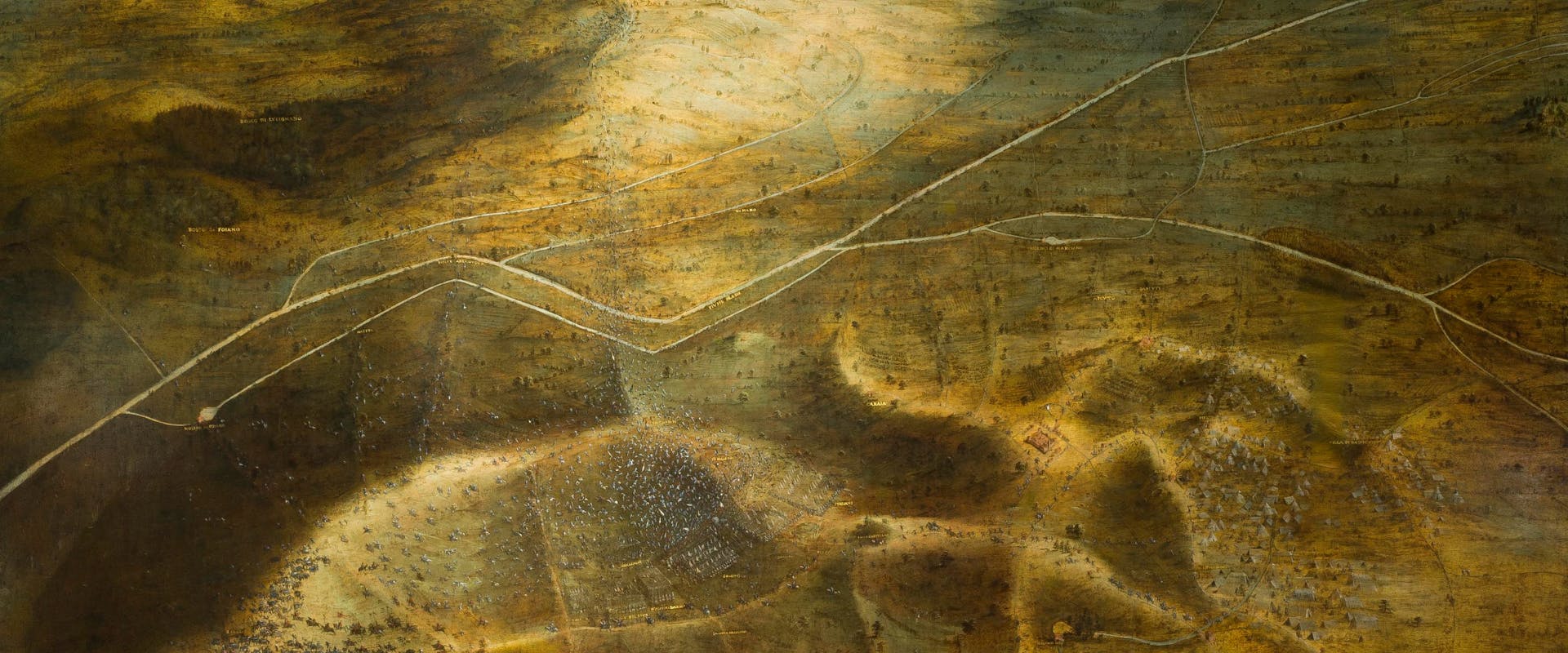From the storage 1. Portraits of countries, seas and cities
The Palatine Gallery shows a series of maps, images of the territory and historical events such as celebrations and battles.
The exhibition begins with the pictorial transcription of the various episodes of the Battle of Scannagallo by the Flemish artist Jan van der Straet, known as Giovanni Stradano, a historical event on which the narrative of the triumphant Medici achievement is built. Also on display in this section dedicated to the topography of war are two great Battles by Willem van de Velde the Elder. But the use of perspective, combined with the faithful representation of the vegetal elements of the landscape, can also have different purposes, as in the panel attributed to Biagio d'Antonio - which opens the section dedicated to the devotion to places - depicting St. Francis receiving the stigmata. A little more than a century later, in Medicean Florence, the monumental city is the protagonist in the images that, with the precision of a chronicle, recall the Florentine people chorally striving to obtain divine intervention to support the Grand Ducal dynasty.
Topographical veduta and modern cartography, born in the 15th century, are evoked by a 17th-century tombola (or raffle game) created by the erudite Casimire Freschot to teach young Venetian patricians geography and map-reading playfully. The exhibition then touches upon the theme of veduta tout court, which began to emerge in the 17th century, when knowledge of historically crucial places, Rome in particular, became a necessary element in the cultural background of a European prince.
In this context, panoramic views became popular in oblong format and were made detailed by using the camera obscura, as evidenced by the ones on display here, made by Vanvitelli. In this section, there is also a group of small panels, the Seven Wonders of the Ancient World series, exemplifying a particular field of Vedutismo, which originates from the written sheet and not from an actual monument to give concrete form to the veduta itself. In the ancient regime, the veduta also made it possible to capture events of leisure and play, thus making courts linked by kinship and friendship involved.
The most recent landscape paintings exhibited here, almost on the eve of the invention of photography, are the small canvases depicting the most famous Neapolitan panoramas. Indeed, such works were painted to be seen in the backlight and installed on the windows of the private rooms of the Grand Duchess Maria Antonia of the Two Sicilies the day after she arrived in Florence from Naples.
Thus, these "diapositives" masked the remarkable views of Florence and the Boboli Gardens from the windows of Palazzo Pitti, softening the sovereign's detachment from the magnificent places of her adolescence.
